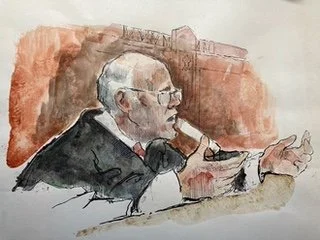The Legal Cases on Boston Desegregation
In March 1972, the NAACP, the Harvard Center for Law and Education, Lawyers Committee for Civil Rights, and Foley, Hoag Law Firm, representing 14 adults and 43 children, filed the Tallulah Morgan vs. James Hennigan case, addressing school segregation and inequities. On June 21, 1974, Judge Garrity ruled that the Boston School Committee had "knowingly carried out a systematic program of segregation affecting all of the city's students, teachers, and school facilities," identifying it as de jure segregation resulting from intentional acts rather than de facto segregation due to housing patterns.
The State Supreme Court mandated desegregation of the Boston Public Schools, and the busing plan devised by the State Department of Education commenced as Phase 1 of desegregation and busing in September 1974.
We will analyze the federal case brought by the plaintiffs, the trial presided over by Judge Garrity, his ruling, and his decision to initiate remedies with busing to desegregate schools in September 1974. The choice not to extend it to a metropolitan-wide busing plan, instead focusing solely on Boston, was influenced by a 5-4 Supreme Court ruling in July 1974 in Milliken vs. Bradley.
The court orders aimed at dismantling the deliberate segregation of the school system encompassed several remedies, such as desegregating both the teaching and administrative staff and implementing cross-district busing of students.
Moderator
Tanisha M. Sullivan, Esq.| President of Boston NAACP
Panelists
Eric Van Loon | among Plaintiff’s Attorney
Bob Pressman | among Plaintiff’s Attorney
Alan Rose | Law Clerk to Judge Garrity
Charles Glenn | MA Department of Education official enforcing the Racial Imbalance Law
Ivan Madrigal-Espinoza | Director of Lawyers for Civil Rights
Martha Minow | Former Dean of Harvard Law School
Jim Vrabel | Boston historian
Terry Seligmann | Clerk to Judge Garrity
Caroline Playter | Attorney for Plaintiff Intervenor El Comite de Padres Pro Defensa De La Educacion Bilingue (El Comite de Padres)
View the Zoom recording of this Panel: Passcode 1pDUg1*R
Courtroom Sketch of Judge Garrity
Outside the federal court house prior to boarding a bus to view various Boston schools. From left: Bailiff, Judge Garrity, Alan Rose, court officer, James St. Clair, John Mirick, Roger Abrams, Eric Van Loon
Courtroom Sketch of Sandra Lynch (left), Eric Van Loon (center), Bob Pressman (right).jpeg
what happened in Boston’s
schools and neighborhoods
When desegregation was initiated through busing in the autumn of 1974, widespread organized resistance emerged from working-class and impoverished white communities, leading to incidents of violence and retaliation. Racial conflicts, including violent episodes at South Boston High School, Charlestown High School, and Hyde Park High School, deeply affected Black students bused to these schools and also impacted some white students. While there were racial tensions in other high schools and middle schools, most schools experienced relatively peaceful transitions. Despite numerous legal appeals by the School Committee, all were ultimately dismissed by the Federal Courts.
Simultaneously, robust organized support arose from civil rights leaders and organizations, legal advocates, including the NAACP and Freedom House, Black officials, and many parents, students, and residents citywide who had advocated for school desegregation. The Citywide Education Coalition (CWEC) and parent councils at various levels, established by the Federal Court and the United States Justice Department's Office of Community Relations, worked diligently to ensure peaceful transitions at newly integrated schools, as well as in neighborhoods resistant to desegregation
The Legacy of Desegregation and Busing: Success or Failure?
Between 1974 and 1980, the Boston Public Schools underwent significant transformations in student demographics, teacher and administrative integration, equitable funding distribution, curriculum reforms, and partnerships with universities, corporations, health centers, and various organizations. Notably, a requirement was imposed that one-third of students in the Exam Schools be students of color, although this mandate was later overturned in the 1990s, with certain aspects reinstated recently.
Integral to these changes were the court-mandated establishment of racial-ethnic parent councils at local schools, school districts, and citywide levels. These councils mobilized hundreds of parents in support of school desegregation and advocated for increased involvement in areas such as selecting school principals, reviewing budgets, and ensuring student safety.
The 1977 elections marked a turning point in Boston's political landscape, with the defeat of school committee members who opposed desegregation, including Louise Day Hicks, John Kerrigan, and Pizxie Palladino. Consequently, a significant portion of white students, who constituted the majority in 1974 when busing began, left the public schools, leading to a steady decline until less than 15% of BPS students today are white.
Despite these changes, Boston's schools, like many urban school systems, grappled with substantial challenges in providing quality education to all students. These challenges included white flight to suburban areas and transfers of white students to parochial and private schools, persistent achievement gaps affecting Black and Brown students, unmet needs of special education students, inadequate physical conditions in many school buildings, and concerning dropout and low college graduation rates among BPS students.


